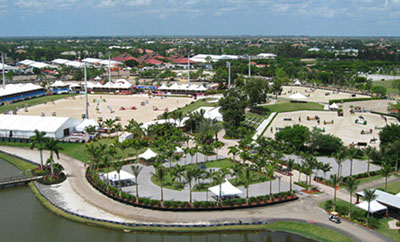Members of the Wellington Equestrian Preserve Committee had a chance last week to review the preliminary draft of a report giving an overview of Wellington’s equestrian community.
The report encompasses all the information on the equestrian community gathered as part of the village’s partnership with Florida Atlantic University. The data was collected during last year’s equestrian season and breaks down everything from the number of stalls and horses in the village to the disciplines of farms throughout Wellington.
“The data has given us a bunch of information,” Equestrian Master Plan Project Director Mike O’Dell said at the Sept. 12 meeting. “We’ve broken it down by area because that’s how we attack the information.”
O’Dell noted that the reports, including results of the FAU surveys taken at equestrian events, are available at www.wellingtonfl.gov.
“In this report, we’ve highlighted the things we learned through the FAU study,” he said. “The survey is another tool of what we’ve learned. It’s nothing more than an idea of what’s out there.”
According to the report, Wellington sees an estimated 11,000 to 12,000 horses during the peak season from December to February. That number dwindles to about 2,600 in the summer but begins to rise again from September to November.
Of the farms in Wellington, 45 percent were identified as hunter jumper, 13 percent were dressage and 14 percent were polo. Only 8 percent were a combination of disciplines, while the remaining 20 percent were classified as recreational.
Committee Member Lisa Elie asked for a definition of “recreational facility.”
O’Dell said that farms with no indication of a specific discipline were labeled recreational.
“We knew that there was a barn on the property,” he said. “We knew that there were horses in some form. But we couldn’t identify any equipment — like a jump or a specific ring — that told us what they were doing.”
Wellington has more than 3.2 million square feet of barns and 8,872 permanent stalls, according to the report.
Committee Chair Cynthia Gardner noted that temporary stalls make up a large portion of Wellington’s barns during the season.
“When people get temporary tents, they have to get a permit,” she noted. “We should know where those tents are and how many stalls they have.”
O’Dell said that the survey estimated between 2,000 and 3,000 temporary stalls for last season but noted that the information could be updated based on permits.
Elie said that in her time studying Rustic Ranches, which has several polo facilities, she noticed that polo ponies are often turned out in herds. “There can be anywhere from two to 10 horses in a field,” she said. “How do we account for that?”
Committee Member Carlos Arellano, a well-known polo player, said that most of those horses would be in stalls during season.
“Turn out is mostly used in summer time,” he said. “Horses go into stalls in the winter, so I still think it would be one horse, one stall.”
One of the major issues O’Dell said he wanted the committee to address was connectivity within the equestrian preserve — both by expanding and improving bridle paths and coming up with a solution for golf cart traffic.
“This has given us an idea where the hot points are, although we all already knew where most of them were,” he said. “We know that the areas around the Palm Beach International Equestrian Center are very heavily used by golf cart travelers and horses.”
On the other hand, O’Dell said that there is less golf-cart travel in southern parts of Wellington. He suggested a “thoroughfare,” which would provide connectivity and separate horses, cars and golf carts.
“It could help get more people into the northern portion of Wellington and the venues,” he said. “I want to talk about creating a backbone system for those particular rights-of-way.”
O’Dell cautioned that he wasn’t talking about a highway, but pointed to South Shore Blvd. south of Pierson Road as an example. “There is a bridle path on the west side,” he said. “Then you have vehicles in the middle, and a multi-purpose path on the east side.”
Gardner said that part of the discussion must center on how to get horses, golf carts and vehicles safely through intersections. She pointed to Lyons Road, where developers built a tunnel under the road.
“They build a tunnel for people to cross from one side to the other,” she said. “The developer actually built that. It wasn’t cheap, but it wasn’t overwhelming. Something similar would make a huge difference to our bridle trail system. A lot of our trails don’t get used, and that could expand our system enormously.”
O’Dell also noted that increased development and widening of roads often keeps equestrians from using the trail system. He pointed to Lake Worth Road.
“Equestrians stay to the north side,” he said. “They don’t want to cross the road. That’s why we need to look at connectivity from the north, south, east and west.”
Ultimately, he said he hoped that the committee could begin to form a vision for Wellington’s future.
“Where do we see the community going at large?” O’Dell asked. “Those are the long-term impacts that we, as a committee, will be deciding.”
Above: The Palm Beach International Equestrian Center.








